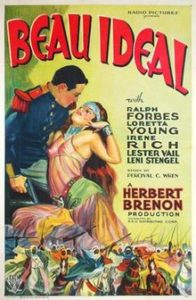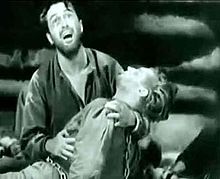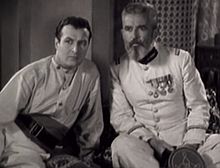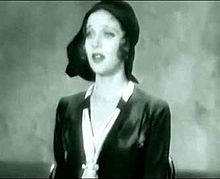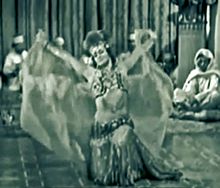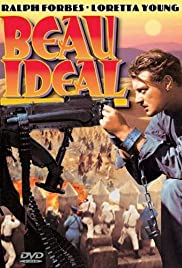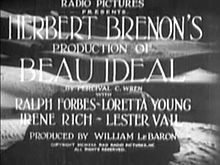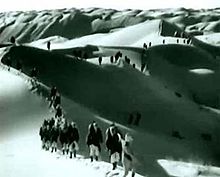Beau Ideal ** (1931, Ralph Forbes, Loretta Young, Irene Rich, Lester Vail, Frank McCormick, George Rigas) – Classic Movie Review 10,596
Percival Christopher Wren’s 1927 novel Beau Ideal is adapted by RKO Radio Pictures into a rather feeble and uninvolving talkie follow-up to the silent classics Beau Geste and (1926) Beau Sabreur (1928), with John Geste (a returning Ralph Forbes reprising his 1926 part) teaming up with his newly found Foreign Legion chum Otis Madison (Lester Vail) to fight the wicked Emir (George Rigas). This third film was billed as the sequel to Beau Geste, having many of the same characters, as well as same star, screen-writer, director and cinematographer.
It also stars Loretta Young, Frank McCormick, Irene Rich and Lester Vail, making his film debut after replacing Douglas Fairbanks Jr, who was recalled by his studio Warner Bros. Vail made only eight films (in 1931 and 1932) and returned to the stage in 1932.
Director Herbert Brenon’s 1931 adventure Beau Ideal offers plenty of action and a dash of love, but the stodgy script, early sound filming, and mostly overheated, silent-style acting keep it far from ideal. Nevertheless, it introduced two technological advancements: the concentrator microphone to filter noise in exterior shots and the Dunning process (loading two reels of film into a camera so they pass through the camera gate together) used here to adapt the film for foreign-language versions. The ambitious production, striking photography and location shooting are the main assets.
Director Brenon also made the 1926 Beau Geste, his most famous movie. The screenplay is adapted from P C Wren’s novel by Paul Schofield, who also wrote the screenplay for the 1926 Beau Geste, with contributions from Elizabeth Meehan (adaptation) and Marie Halvey (dialogue). Also J Roy Hunt is the cinematographer on both the 1926 Beau Geste and this film. Max Steiner finished the score by Christmas 1930.
Also in the cast are Otto Matieson, Don Alvarado, Bernard Siegel, Hale Hamilton, Myrtle Stedman, John M St Polis, Joseph de Stefani, Paul McAllister and Leni Stengel.
With all this talent, and all this returning talent, not to mention expense, all should have been well. Beau Ideal was produced on a budget of $707,000, and took $575,000 at the box office, so was a box-office flop in its day, losing over $330,000 for RKO, but it is possibly just about worth a look as an interesting curio of the period.
The film was copyrighted in 1930 so in 1958 it entered the public domain in the US because the claimants did not renew its copyright registration in the 28th year after publication.
Exteriors were filmed in Yuma, Arizona, the same location as the earlier Beau Geste film, and in the Sonora Desert in Mexico, while interiors were shot on the RKO lot in Hollywood. Production began in late September 1930 and finished in late October. It took five weeks to film, editing was done during November and December 1930 by Brenon, and it was released on 16 January 1931.
Beau Ideal is directed by Herbert Brenon, runs 82 minutes, is produced by RKO Radio Pictures, distributed by RKO Radio Pictures, is written by Paul Schofield, Elizabeth Meehan (adaptation) and Marie Halvey (dialogue), is shot in black and white by J Roy Hunt, is produced by William LeBaron, and scored by Max Steiner.
The cast are Ralph Forbes as John Geste, Loretta Young as Isobel Brandon, Irene Rich as Lady Brandon, Lester Vail as Otis Madison, Frank McCormack as Carl Neyer, Otto Matieson as Jacob Levine, Don Alvarado as Ramon Gonzales, Bernard Siegel as Ivan Badineff, Myrtle Stedman as Mrs Frank Madison, John St Polis as Judge Advocate, Joseph De Stefani as Prosecuting Attorney, Paul McAllister as Sergeant Frederic, Hale Hamilton as Major Laboudy, George Regas as The Emir and Leni Stengel as Zuleika the Angel of Death.
DVD available.
© Derek Winnert 2020 Classic Movie Review 10,596
Check out more reviews on http://derekwinnert.com

